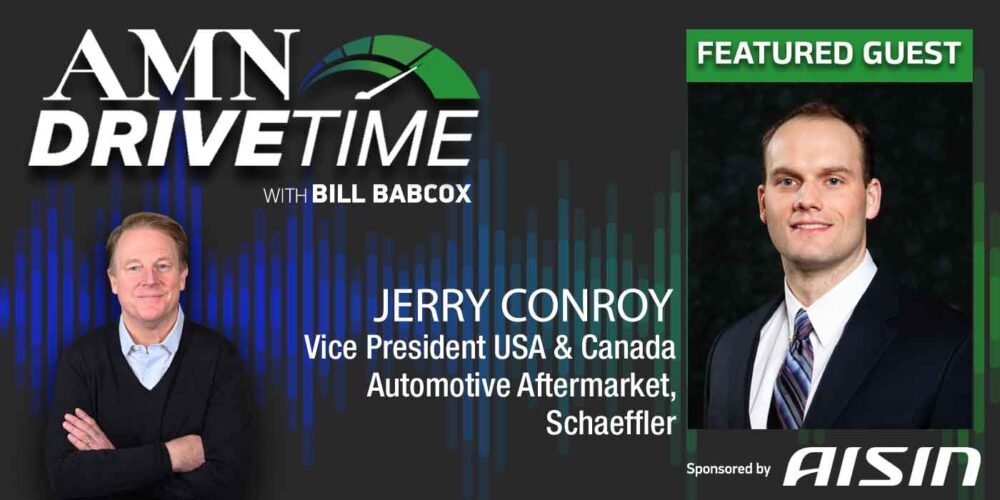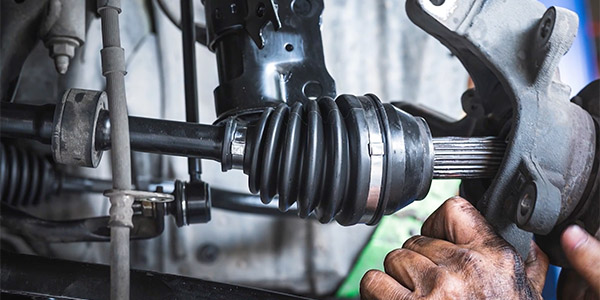CC:
When removing the driveshaft, you must first raise a vehicle up using a lift or floor jack and jack stands. If the rear driveshaft is being removed and the rear of the vehicle is being jacked up, it is very important to chalk the front wheels, so the vehicle cannot roll off the jack stands should it be bumped or otherwise shifted. When a driveshaft is removed, the vehicle will no longer be in park and can roll because a link between the drive wheels and transmission is removed. Mark the driveshaft orientation before beginning. Marking the driveshaft for removal is a good idea if the original driveshaft is to be reinstalled. But when replacing, it’s not needed. This will help return the driveshaft to its original position on the differential, which can help avoid drive line vibrations once the driveshaft is reinstalled.
First, remove the shaft differential flange mounting bolts. These bolts will be very tight. So use quality tools to avoid stripping. Also, these bolts may use Threadlocker to avoid coming loose while in operation, which needs to be reapplied when reinstalling. Using a plastic hammer, gently shock the driveshaft loose from the differential flange by striking the rear yoke, the U-joint mount. At this point, the back half of the shaft will be free. So hang onto it. On some vehicles, there will be a center support which must be undone by removing the two center support mounting bolts. When removing the driveshaft, use both hands and gently slide the driveshaft from the transmission or transfer case. A small amount of fluid might leak out, so have that fluid catch basin ready. At this point, the U-joint at either end of the shaft should be checked.
Firmly grab the yoke and move it in all directions. It should be a smooth motion with no rough spots or play in any direction. Before reinstalling the driveshaft, apply a small amount of grease to the yoke. This will help lubricate the output shaft seal in the transmission or transfer case. There is a dust boot along with the rear seal, which is incorporated within the transmission or transfer case tail housing seal. Be careful reinstalling the driveshaft yoke, so you do not damage the seal. Gently guide the yoke into place over and onto the output shaft. Once the front yoke is installed, pull the driveshaft back into place while inserting mounting bolts by hand to avoid cross-threading. Finish installing the mounting bolts while making sure the alignment marks are together. Tighten the bolts evenly and in a cross pattern to factory specifications. If any fluid was lost during the job, check and refill the transmission or transfer case after the shaft has been installed. And you are all set. Thanks for watching.
This video is sponsored by TrakMotive.













